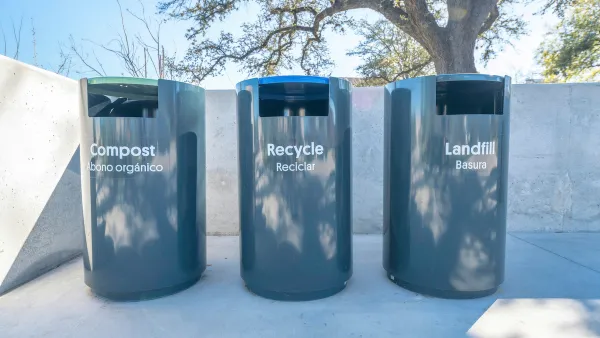A new technology called plasma gasification may make landfills a thing of the past, and make city garbage collection a profitable service.
"The entire thing takes up about as much space as a two-car garage, surprisingly compact for a machine that can consume nearly any type of waste-from dirty diapers to chemical weapons-by annihilating toxic materials in a process as old as the universe itself."
"Called plasma gasification, it works a little like the big bang, only backward (you get nothing from something). Inside a sealed vessel made of stainless steel and filled with a stable gas-either pure nitrogen or, as in this case, ordinary air-a 650-volt current passing between two electrodes rips electrons from the air, converting the gas into plasma. Current flows continuously through this newly formed plasma, creating a field of extremely intense energy very much like lightning. The radiant energy of the plasma arc is so powerful, it disintegrates trash into its constituent elements by tearing apart molecular bonds. The system is capable of breaking down pretty much anything except nuclear waste, the isotopes of which are indestructible. The only by-products are an obsidian-like glass used as a raw material for numerous applications, including bathroom tiles and high-strength asphalt, and a synthesis gas, or "syngas"-a mixture of primarily hydrogen and carbon monoxide that can be converted into a variety of marketable fuels, including ethanol, natural gas and hydrogen."
"In a city with an average tipping fee, a $250-million converter could pay for itself in about 10 years, and that's without factoring in the money made from selling the excess electricity and syngas. After that break-even point, it's pure profit."
"Someday very soon, cities might actually make money from garbage."
Thanks to David Greiman
FULL STORY: The Prophet of Garbage

Analysis: Cybertruck Fatality Rate Far Exceeds That of Ford Pinto
The Tesla Cybertruck was recalled seven times last year.

National Parks Layoffs Will Cause Communities to Lose Billions
Thousands of essential park workers were laid off this week, just before the busy spring break season.

Retro-silient?: America’s First “Eco-burb,” The Woodlands Turns 50
A master-planned community north of Houston offers lessons on green infrastructure and resilient design, but falls short of its founder’s lofty affordability and walkability goals.

Test News Post 1
This is a summary

Analysis: Cybertruck Fatality Rate Far Exceeds That of Ford Pinto
The Tesla Cybertruck was recalled seven times last year.

Test News Headline 46
Test for the image on the front page.
Urban Design for Planners 1: Software Tools
This six-course series explores essential urban design concepts using open source software and equips planners with the tools they need to participate fully in the urban design process.
Planning for Universal Design
Learn the tools for implementing Universal Design in planning regulations.
EMC Planning Group, Inc.
Planetizen
Planetizen
Mpact (formerly Rail~Volution)
Great Falls Development Authority, Inc.
HUDs Office of Policy Development and Research
NYU Wagner Graduate School of Public Service



























